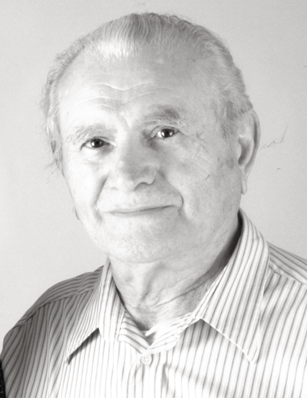Experience: Gleiwitz

|
|
|
|
|
|
|
|
|
|
|
|
|
|
AUSCHWITZ SUBCAMPS
“Between 1942 and 1944, the SS authorities at Auschwitz established 39 subcamps. Some of them were established within the officially designated “development” zone, including Budy, Rajsko, Tschechowitz, Harmense, and Babitz. Others, such as Blechhammer, Gleiwitz, Althammer, Fürstengrube, Laurahuette, and Eintrachthuette were located in Upper Silesia north and west of the Vistula River. Some subcamps were located in Moravia, such as Freudental and Bruenn (Brno). In general, subcamps that produced or processed agricultural goods were administratively subordinate to Auschwitz-Birkenau; while subcamps whose prisoners were deployed at industrial and armaments production or in extractive industries (e.g., coal mining, quarry work) were administratively subordinate to Auschwitz-Monowitz. After November 1943, this division of administrative responsibility was formalized.
THE LIBERATION OF AUSCHWITZ
“In mid-January 1945, as Soviet forces approached the Auschwitz concentration camp complex, the SS began evacuating Auschwitz and its subcamps. SS units forced nearly 60,000 prisoners to march west from the Auschwitz camp system. Thousands had been killed in the camps in the days before these death marches began. Tens of thousands of prisoners, mostly Jews, were forced to march either northwest for 55 kilometers (approximately 30 miles) to Gliwice (Gleiwitz), joined by prisoners from subcamps in East Upper Silesia, such as Bismarckhuette, Althammer, and Hindenburg, or due west for 63 kilometers (approximately 35 miles) to Wodzislaw (Loslau) in the western part of Upper Silesia, joined by inmates from the subcamps to the south of Auschwitz, such as Jawischowitz, Tschechowitz, and Golleschau. SS guards shot anyone who fell behind or could not continue. Prisoners also suffered from cold weather, starvation, and exposure on these marches. At least 3,000 prisoners died on route to Gliwice alone; possibly as many as 15,000 prisoners died during the evacuation marches from Auschwitz and the subcamps.
“Upon arrival in Gliwice and Wodzislaw, the prisoners were put on unheated freight trains and transported to concentration camps in Germany, particularly to Flossenbürg, Sachsenhausen, Gross-Rosen, Buchenwald, Dachau, and also to Mauthausen in Austria. The rail journey lasted for days. Without food, water, shelter, or blankets, many prisoners did not survive the transport.”
United States Holocaust Memorial Museum
http://www.ushmm.org/wlc/en/article.php?ModuleId=10005189
Accessed on July 21, 2011
“Between 1942 and 1944, the SS authorities at Auschwitz established 39 subcamps. Some of them were established within the officially designated “development” zone, including Budy, Rajsko, Tschechowitz, Harmense, and Babitz. Others, such as Blechhammer, Gleiwitz, Althammer, Fürstengrube, Laurahuette, and Eintrachthuette were located in Upper Silesia north and west of the Vistula River. Some subcamps were located in Moravia, such as Freudental and Bruenn (Brno). In general, subcamps that produced or processed agricultural goods were administratively subordinate to Auschwitz-Birkenau; while subcamps whose prisoners were deployed at industrial and armaments production or in extractive industries (e.g., coal mining, quarry work) were administratively subordinate to Auschwitz-Monowitz. After November 1943, this division of administrative responsibility was formalized.
THE LIBERATION OF AUSCHWITZ
“In mid-January 1945, as Soviet forces approached the Auschwitz concentration camp complex, the SS began evacuating Auschwitz and its subcamps. SS units forced nearly 60,000 prisoners to march west from the Auschwitz camp system. Thousands had been killed in the camps in the days before these death marches began. Tens of thousands of prisoners, mostly Jews, were forced to march either northwest for 55 kilometers (approximately 30 miles) to Gliwice (Gleiwitz), joined by prisoners from subcamps in East Upper Silesia, such as Bismarckhuette, Althammer, and Hindenburg, or due west for 63 kilometers (approximately 35 miles) to Wodzislaw (Loslau) in the western part of Upper Silesia, joined by inmates from the subcamps to the south of Auschwitz, such as Jawischowitz, Tschechowitz, and Golleschau. SS guards shot anyone who fell behind or could not continue. Prisoners also suffered from cold weather, starvation, and exposure on these marches. At least 3,000 prisoners died on route to Gliwice alone; possibly as many as 15,000 prisoners died during the evacuation marches from Auschwitz and the subcamps.
“Upon arrival in Gliwice and Wodzislaw, the prisoners were put on unheated freight trains and transported to concentration camps in Germany, particularly to Flossenbürg, Sachsenhausen, Gross-Rosen, Buchenwald, Dachau, and also to Mauthausen in Austria. The rail journey lasted for days. Without food, water, shelter, or blankets, many prisoners did not survive the transport.”
United States Holocaust Memorial Museum
http://www.ushmm.org/wlc/en/article.php?ModuleId=10005189
Accessed on July 21, 2011
Contact us
thank you!
Your application is successfuly submited. We will contact you as soon as possible
thank you!
Your application is successfuly submited. Check your inbox for future updates.